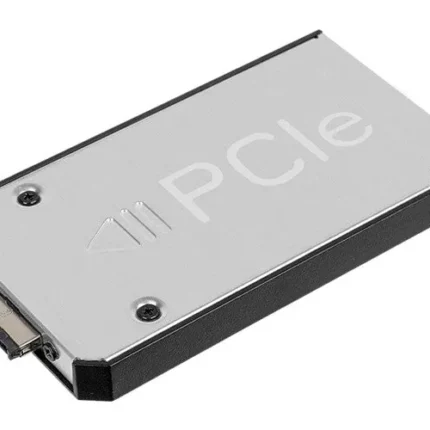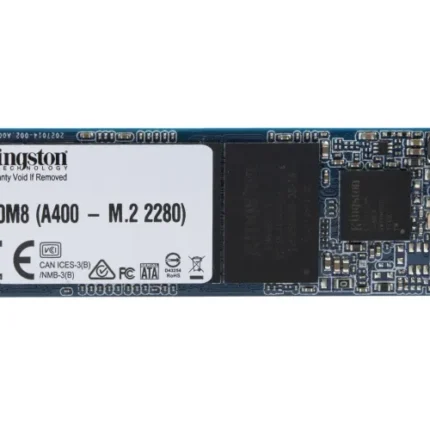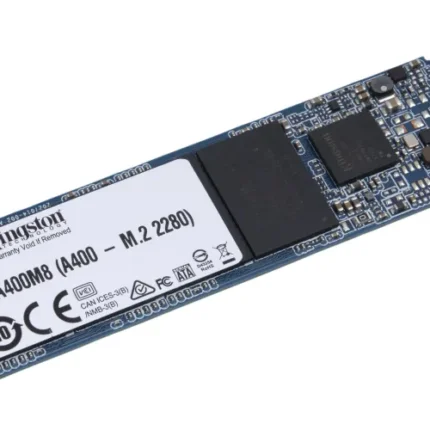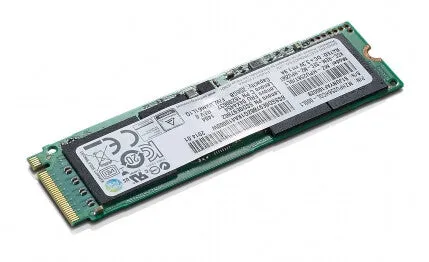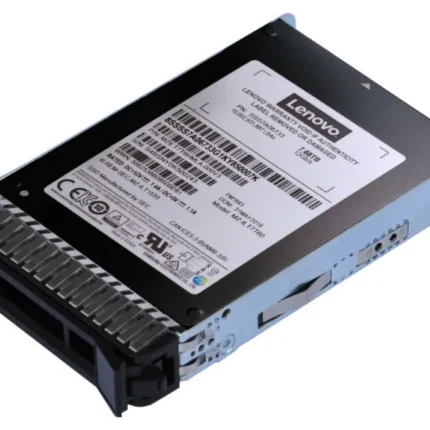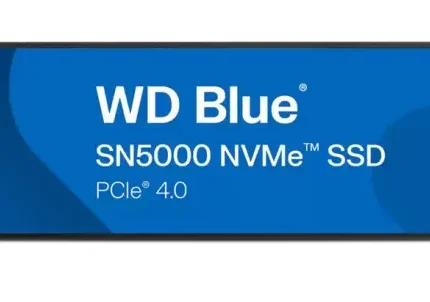Lenovo 4XB7A13658 internal solid state drive 1.6 TB 3.5″ SAS 3D NAND
- Mainstream server SSD suitable for mixed read-write-intensive workloads
- Endurance of 3 drive-writes per day (DWPD)
- 2.5-inch or 3.5-inch industry standard form factor with hot-swap tray
- SAS 12 Gbps interface
- Active-active dual port host interface
- Protect data integrity from unexpected power loss with Samsung’s advanced power-lossprotection architecture
- Supports Self-Monitoring, Analysis and Reporting Technology (S.M.A.R.T)
- End-to-end data protection
- Support 16 Initiator with Tag Command Queuing (TCQ) Command Set with a queue-depth of up to128 commands
- Compliant with SCSI Specification (SAS-3 / SPL-3 / SBC-4 / SPC-4 / SAM-5)
- RoHS Compliant
ThinkSystem PM1645 Mainstream SAS 12Gb SSDs
The ThinkSystem PM1645 Mainstream SAS 12Gb solid-state drives (SSDs) in capacities of up to 3.2 TBare next-generation high-performance SSDs suitable for a wide range of applications of running onThinkSystem servers. The PM1645 Mainstream SAS 12Gb SSD is shown in the following figure.
Entry SSDs and Mainstream SSDs have similar read and write IOPS performance, but the key differencebetween them is their endurance (or lifetime) (that is, how long they can perform write operations becauseSSDs have a finite number of program/erase (P/E) cycles). Mainstream SSDs have better endurance butlower cost/IOPS ratio compared to Entry SSDs. SSD write endurance is typically measured by the numberof program/erase (P/E) cycles that the drive incurs over its lifetime, listed as the total bytes of written data(TBW) in the device specification.
The TBW value assigned to a solid-state device is the total bytes of written data (based on the number ofP/E cycles) that a drive can be guaranteed to complete (% of remaining P/E cycles = % of remainingTBW). Reaching this limit does not cause the drive to immediately fail. It simply denotes the maximumnumber of writes that can be guaranteed. A solid-state device will not fail upon reaching the specifiedTBW. At some point based on manufacturing variance margin, after surpassing the TBW value, the drivewill reach the end-of-life point, at which the drive will go into a read-only mode.
For example, the 1.6TB PM1645 SSD has an endurance of 8,760 TB of total bytes written (TBW). Thismeans that for full operation over five years, write workload must be limited to no more than 4,800 GB ofwrites per day, which is equivalent to 3.0 full drive writes per day (DWPD). For the device to last threeyears, the drive write workload must be limited to no more than 8,000 GB of writes per day, which isequivalent to 5.0 full drive writes per day.
| Features | |
|---|---|
| Certification | UL,TUV,FCC,IC,CB,CE, C-Tick, BSMI, KCC, VCCI |
| TBW rating | 8760 |
| Mean time between failures (MTBF) | 2000000 h |
| Uncorrectable Bit Error Rate (UBER) | < 1 per 10^17 bits read |
| End-to-End Data Protection | Yes |
| Hot-swap | Yes |
| S.M.A.R.T. support | Yes |
| Write latency | 60 µs |
| Read latency | 106 µs |
| Random write (4KB) | 90000 IOPS |
| Random read (4KB) | 230000 IOPS |
| Write speed | 1200 MB/s |
| Read speed | 1000 MB/s |
| Data transfer rate | 12 Gbit/s |
| Component for | Server/workstation |
| Memory type | 3D NAND |
| Interface | SAS |
| SSD form factor | 3.5″ |
| SSD capacity | 1.6 TB |
| Power | |
|---|---|
| Power consumption (write) | 9 W |
| Power consumption (read) | 9 W |
| Operational conditions | |
|---|---|
| Maximum operating altitude | 4572 m |
| Operating shock | 1500 G |
| Operating vibration | 20 G |
| Storage relative humidity (H-H) | 5 – 95% |
| Operating relative humidity (H-H) | 5 – 95% |
| Storage temperature (T-T) | -40 – 85 °C |
| Operating temperature (T-T) | 0 – 70 °C |
| Other features | |
|---|---|
| Compliance certificates | RoHS |
- leaflet




